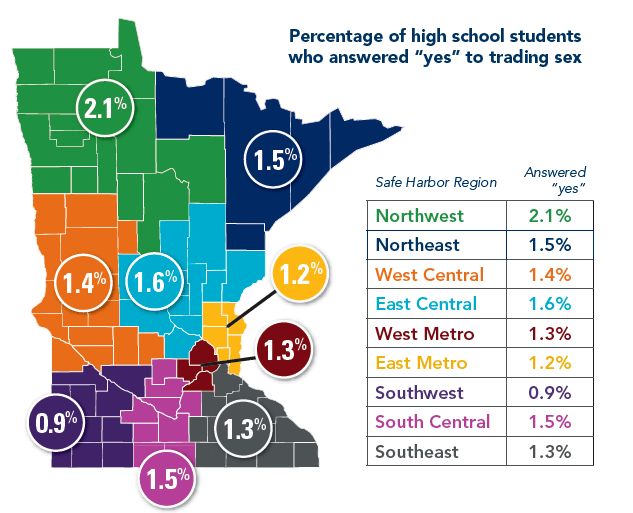Gaining Buy-in on the Presence of Trafficking & Exploitation in Minnesota
By Hunter Beckstrom | Prevention and Sexual Exploitation Specialist at SVJI @MNCASA
Decades of persistence and progress have brought attention to the prevalence of sexual assault in our communities. While many myths, barriers, and harms still confront survivors of sexual assault, few can ignore how widespread this experience is. However, this has not been the case for the realities of trafficking and exploitation.
Although most people may acknowledge that trafficking certainly does occur, it is often times only in the context of happening in large metropolitan areas or other countries. An all too common response proves to be, “Sure, trafficking might happen but not in our community.”
In truth, trafficking and exploitation occurs in every community and county across the United States. The false perception of trafficking is largely due to how it is framed in mainstream media and scary realities of how people are pushed into the life of exploitation.
For SARTs or others who are interested in taking on a response to trafficking in your community, gaining buy-in is a crucial initial step. However, it may also pose as a tremendous barrier. A useful strategy to bridge this gap in Minnesota is to utilize data from the Minnesota Student Survey (MSS).
The Minnesota Department of Health shares that the MSS began in 1989 and is administered to grades 5th, 8th, 9th, and 11th every three years. Students are surveyed on a large spectrum of different topics including academic performance, engagement in community programs, and family relationships to substance use, risk factors, and sexual health.
Now, you might be asking yourself, “Why might this be applicable to trafficking and exploitation?” In 2019 a new question was added to the MSS for 9th and 11th graders: Have you ever traded sex or sexual activity to receive money, food, drugs, alcohol, a place to stay, or anything else? This new addition to the MSS has been transformational in how Minnesotans can see the self-disclosed presence of trafficking and exploitation in their own communities.
In examination of the 2019 MSS data, the Minnesota Youth Sex Trading (MYST) Project out of the University of Minnesota created an illustration that portrays the percentage of high school students who answered “yes” to trading sex in nine different regions.

Although on the surface these percentages may initially seem insignificant, this represents over 5,000 youth across the state of Minnesota that have self-disclosed to trading sex.
With so much participation across school districts, we are able to identify prevalence rates in nearly every community in the state. Not only is this research insightful in order to build awareness, it also sheds light upon risk factors that
push youth into the life of exploitation. For instance, cross-analyses of food insecurity, homelessness, substance abuse, and experience of other forms of abuse with trading sex can pinpoint strategies of response and prevention.
The unique lessons learned and beneficial strategies in Minnesota have the potential to be recreated in communities across the country to bring awareness to the prevalence of trafficking and exploitation.
Reach out to us in the comments or by emailing [email protected] if you have any questions about this week’s blog.
